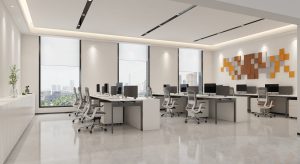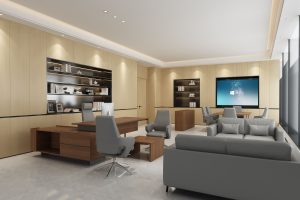Today’s offices aren’t built around cubicles—they’re designed for creativity, teamwork, and adaptability. As hybrid work reshapes the way we think about space, collaborative workspaces have emerged as a must-have for forward-thinking businesses.
Whether you're outfitting a co-working hub, refreshing a tech startup’s office, or managing a large-scale commercial project, custom desks and seating arrangements can make or break your workspace's productivity potential. In this article, we explore how to create collaborative environments that foster innovation and how wholesale B2B buyers can benefit from flexible, scalable solutions.
Why Collaborative Workspaces Are Here to Stay
The modern workforce thrives on interaction. According to a recent McKinsey report, 80% of high-performing companies encourage open communication through physical space design. And with the rise of flexible schedules, companies are prioritizing adaptable furniture over static setups.
Key features of collaborative office spaces include:
- Open floor plans with modular zones
- Shared desks and multi-user tables
- Comfortable group seating and lounge areas
- Movable partitions and acoustic panels for hybrid setups
These elements are no longer luxuries—they’re necessities for attracting talent and enhancing team performance.
How Custom Desks and Seating Support Collaboration
1. Tailored Desk Layouts = Better Workflow
A one-size-fits-all desk no longer serves diverse team needs. With customizable desk dimensions, storage solutions, and cable management options, companies can create tailored layouts for tech teams, designers, or client-facing departments.
Popular options include:
- Bench desks for side-by-side collaboration
- Sit-stand shared stations for flexible usage
- Pod-style desks to support team-based projects
2. Flexible Seating Encourages Informal Exchange
Seating is more than a chair—it’s an invitation to connect. Incorporate soft modular sofas, mobile task chairs, and adjustable stools to build zones where ideas flow naturally.
Pro tip: Select materials that are durable, easy to clean, and ergonomically designed to support long-term comfort.
3. Mobility is Key
Offices change week to week. That’s why lightweight, mobile furniture like foldable desks and stackable seating allows teams to reconfigure their workspace on demand—ideal for dynamic workforces.
What to Look for in a Collaborative Office Furniture Supplier
When sourcing B2B furniture for collaborative workspaces, consider the following:
✅ Customization Options
Can the supplier adjust size, color, finish, and material?
✅ Bulk Order Support
Do they offer wholesale pricing, MOQ flexibility, and shipping support?
✅ Design Consultation
Is there a team to help you optimize layout and workflow?
✅ Sustainability Certifications
Environmentally conscious design (e.g., FSC-certified wood, low-VOC materials) is a growing procurement standard.
At BECY Furniture, we specialize in commercial office solutions, providing custom-made desks, seating, and modular furniture at scale. Our manufacturing partners support global exports, project-based quoting, and design assistance.
Case Study: From Static to Synergy
A UK-based digital marketing agency approached us needing a collaborative makeover. We provided:
- 15 custom bench desks with oak veneer finishes
- Mobile privacy panels for flexible zoning
- 30 ergonomic chairs with breathable mesh backs
Result? A 25% increase in internal team satisfaction and improved cross-departmental collaboration within just two months.
Final Thoughts: Design for the People Who Use It
Great furniture isn’t just about form—it’s about empowering the people who use it. By choosing collaborative workspace furniture tailored to your team’s workflow, you foster a more engaged, agile, and productive work environment.
Looking to customize your next office project?
Visit BECYFurniture.com and speak with our team to explore scalable solutions for your growing business.






